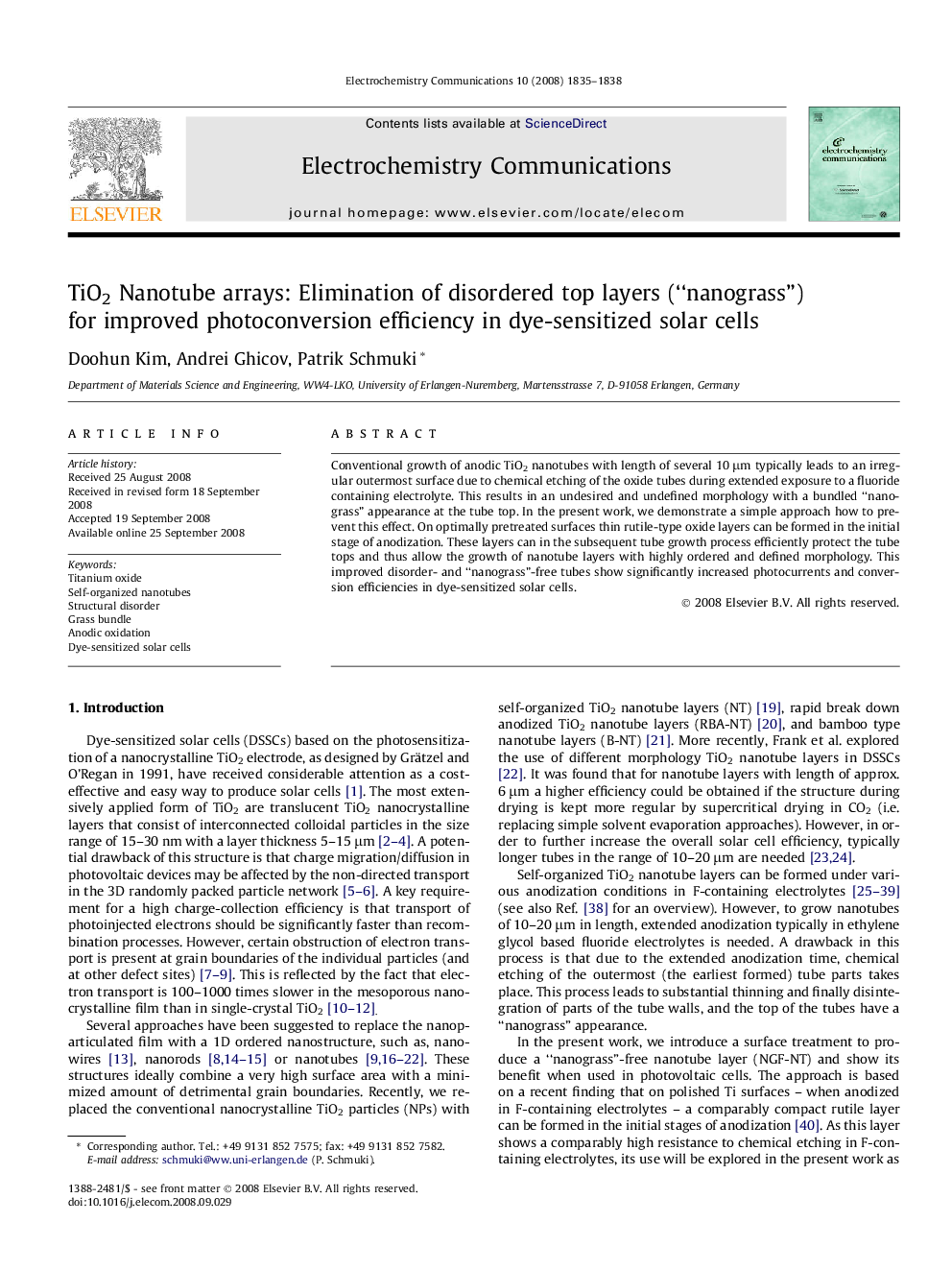| Article ID | Journal | Published Year | Pages | File Type |
|---|---|---|---|---|
| 181708 | Electrochemistry Communications | 2008 | 4 Pages |
Conventional growth of anodic TiO2 nanotubes with length of several 10 μm typically leads to an irregular outermost surface due to chemical etching of the oxide tubes during extended exposure to a fluoride containing electrolyte. This results in an undesired and undefined morphology with a bundled “nanograss” appearance at the tube top. In the present work, we demonstrate a simple approach how to prevent this effect. On optimally pretreated surfaces thin rutile-type oxide layers can be formed in the initial stage of anodization. These layers can in the subsequent tube growth process efficiently protect the tube tops and thus allow the growth of nanotube layers with highly ordered and defined morphology. This improved disorder- and “nanograss”-free tubes show significantly increased photocurrents and conversion efficiencies in dye-sensitized solar cells.
